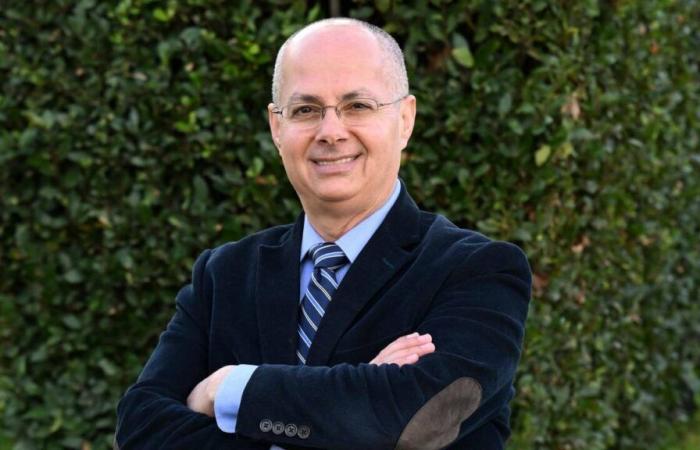Le Temps: How did you develop the MOFs?
Omar Yaghi: I first became interested in a class of molecules called coordination polymers, which was described in the 1950s. They were made of metal atoms linked together by neutral charge connectors or ligands. By the 1990s, there were hundreds of these polymers, but they did not retain their porosity because their network structures were very fragile. I was able to make them stronger by using organic ligands, which have two advantageous properties. On the one hand, they have more than a single point of attachment to the metal, and on the other hand, they are charged, creating a very strong interaction with the metal. Our first success was published in 1995, which opened a new field of research.
How did you achieve what others thought was impossible at the time, which was to obtain a crystal with these MOFs?
The key is to control the speed at which these elements come together, to enable what is called microscopic reversibility. At the initial stage, the elements must be able to fit together, come apart and fit together again until the right result is achieved. Otherwise, they may arrange at a bad angle and create a defect. In this case, we do not obtain a crystal, which must be perfect. We found the right conditions to achieve this, with a specific cocktail between temperature, pressure and solvent.
A bit like what nature does when magma cools and crystallizes to give quartz or a diamond, for example?
Yes, it’s the same for MOFs, except we produce them much faster. It took nature geological times to make these crystals, it is a very slow process.
What do these MOFs look like on a macroscopic scale?
Their appearance depends on the metal they contain. If it is zinc, the crystals are clear, beautiful, and resemble zirconiums or diamonds. If they are copper, they are a beautiful green color.
Can they be manufactured on a large scale?
BASF is already able to produce multi-ton quantities of MOF. Last year, the company announced the production of hundreds of tons of these crystals, for CO2 capture in cement plants.
What is the difference between MOF and COF?
COFs do not contain metals, they are entirely made up of organic units linked by covalent bonds [lorsque deux atomes partagent chacun un électron, ndlr] to form porous structures.
In 2012, you showed that MOFs and COFs could capture CO2, but also methane, hydrogen and water from the air. Four molecules with decisive roles in the context of climate change. How can they be useful?
We discovered that these crystals attract gases almost like magnets. And we can make the MOFs and COFs porous to the point that they contain 7000 m² of capture surface per gram of crystal. So that’s a lot of space in which we can compact gases. Thus, a tank containing these materials can contain 18 times more CO2 than an empty tank. For methane, this could be interesting for its transport. For hydrogen, we could concentrate it and store it at room temperature. It is necessary to create a different “net”, MOF or COF, adapted to each gas.
Are these materials more effective than other technologies for capturing CO2 in the air, already deployed by companies like the Swiss Climeworks?
According to the literature, our material is more resistant. More cycles can be carried out, and more energy efficiently, because CO2 can be recovered at temperatures as low as 50 or 60°C.
Your recent research focuses on MOF-303, the metal of which is aluminum, which you developed to remove water from the air. How does it work?
The pores of MOF-303 consist of a grid of hydrophilic and hydrophobic units [qui attirent et repoussent l’eau respectivement, ndlr] repeated billions of times. The first water molecule travels to the hydrophilic region of the porous structure. The next one passes through the hydrophobic region and moves towards the next hydrophilic region. And so on until all the pores are filled with water. It’s pretty fast. It takes nanoseconds for water to flow in and out. At the end, the water is recovered by heating. In the desert, for example, water can be absorbed at night, when it is cooler and more humid. Then, during the day, sunlight is enough to bring out the water which can be collected in liquid form by condensation. For each ton of MOF, we can provide 3000 liters of water per day, for many years, with the same material.
How much do these 3000 liters per day cost in the end and what energy does it require?
Each liter costs a penny, covering the system and starting materials. The sun’s energy is sufficient. So the potential for its application in water-scarce regions is significant.
Are you concerned about climate change causing more frequent droughts in many parts of the world?
The water situation is getting worse all over the world, even in industrialized countries, where it is becoming polluted. In fact, some places that you and I think are very watered, like England and Belgium, are going to have a water crisis because they are using more groundwater than they are replenishing. In places with high humidity, such as Southeast Asia, some of the water is not clean. Our technology could therefore also be used in these countries.
Donald Trump has just been elected president of the United States for the second time. He appointed a climate skeptic minister responsible for new energies. Does this worry you?
Everyone is concerned when a new administration arrives because it is unclear what kind of changes it will implement. When Barack Obama took office, funding for hydrogen stopped. We don’t know what Donald Trump will do. Whatever happens, science will continue; but its funding could be affected. Hopefully this is a temporary situation. We need governments to be on board, to solve climate-related problems, for example. If they are not, things will become more difficult and will be delayed.
You were born in Jordan, into a family of Palestinian refugees. At fifteen, you left alone for the United States for your studies. How did you experience this change in life?
I didn’t have to go through high school; I went straight to university! I don’t think there is any other country that allows you to get a higher education without a high school diploma. I had to work hard but it was exciting. I get my personal work ethic from my parents: when you set out to solve a problem, there is no going back. Failure is not an option. My parents didn’t have a formal education but they taught me to work hard and always think about the future. So these things became very useful when I had to live alone. I consider myself a very lucky person. I never dreamed of receiving the Balzan Prize. My dream was to publish at least one article with a hundred citations [par d’autres chercheurs dans des articles académiques, ndlr]. And today my students tell me we have hundreds of thousands of citations.
Why were you interested in chemistry?
When I was a student, in the organic chemistry laboratory, I saw crystals forming in the solution, like snowflakes. I witnessed another side of beauty. The crystals were simply stunning. I was very excited to be in a lab and explore. I carried out three projects at the same time, with three different professors.
Your name was circulating for the 2024 Nobel Prize. Were you waiting for your phone to ring the first week of October?
I don’t know how I could have avoided thinking about it when the media was announcing my appointment as possible. To keep my head on my shoulders, I tell myself that prices are above all important to promote a discipline. And in the end, the prizes don’t mean much, what matters is the scientific contribution, that’s what we will remember. Although I don’t know any scientist who has done anything important who doesn’t want to receive the Nobel Prize! But it does not govern our lives or govern the direction of our research. You have to ask yourself questions and try to answer them. And if one day we receive a prize like the Balzan or the Nobel, that’s wonderful.
Today, you are conducting research on molecular weaving. What is it about?
Our idea is to create crystals where the pores could contract and expand. A French scientist called this the “breathing” of MOFs. It’s an interesting concept. Normally, when structures contract and expand, they collapse because the connections are under tension. But if we make a porous material whose components are woven, this stress could be absorbed by the movement of the “threads”. We managed to “weave” such molecules, which thus became less brittle.







